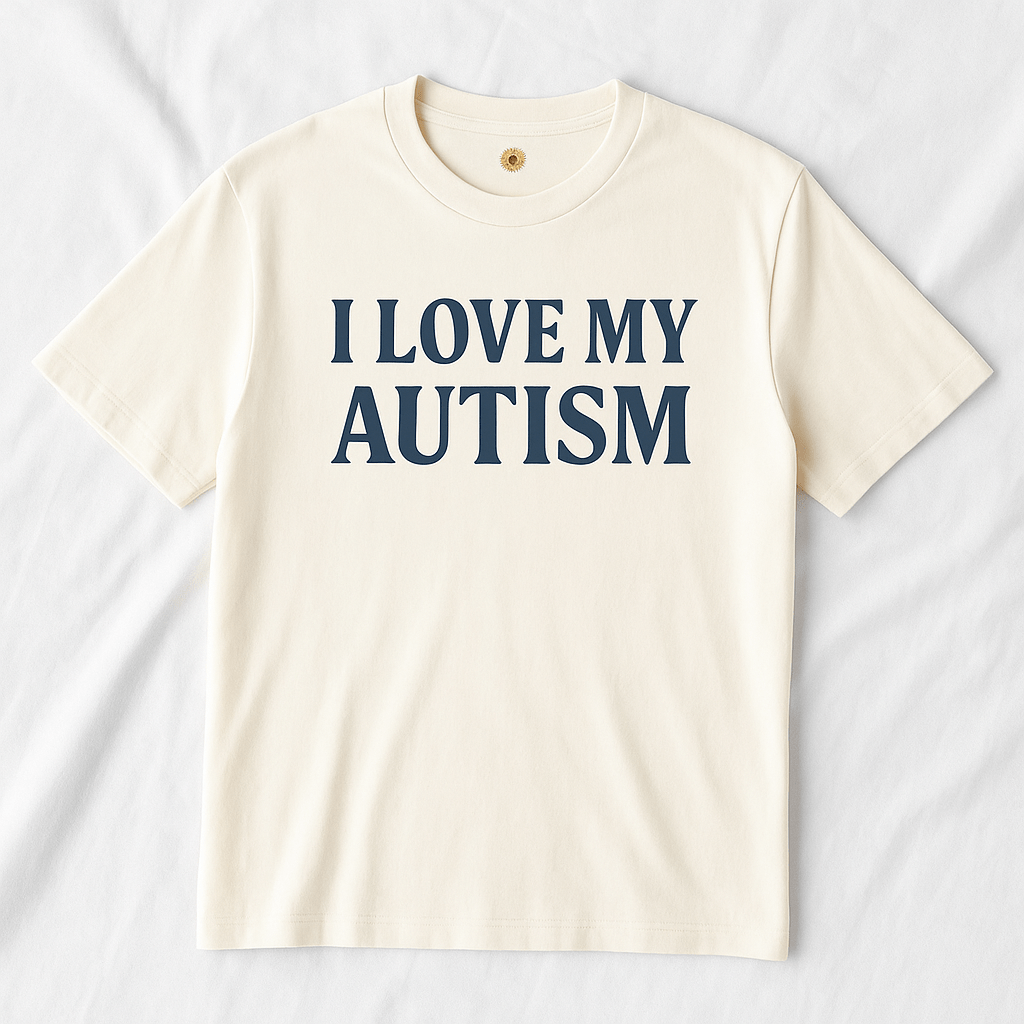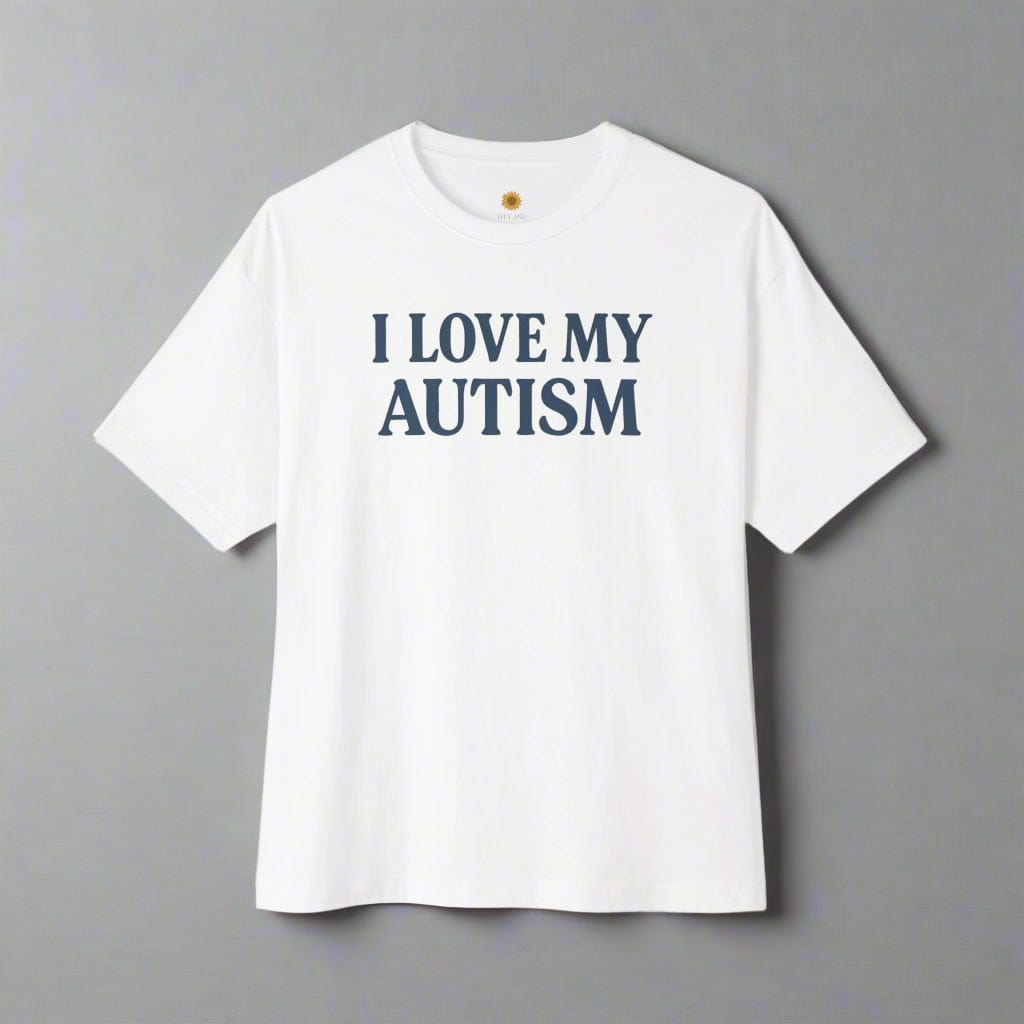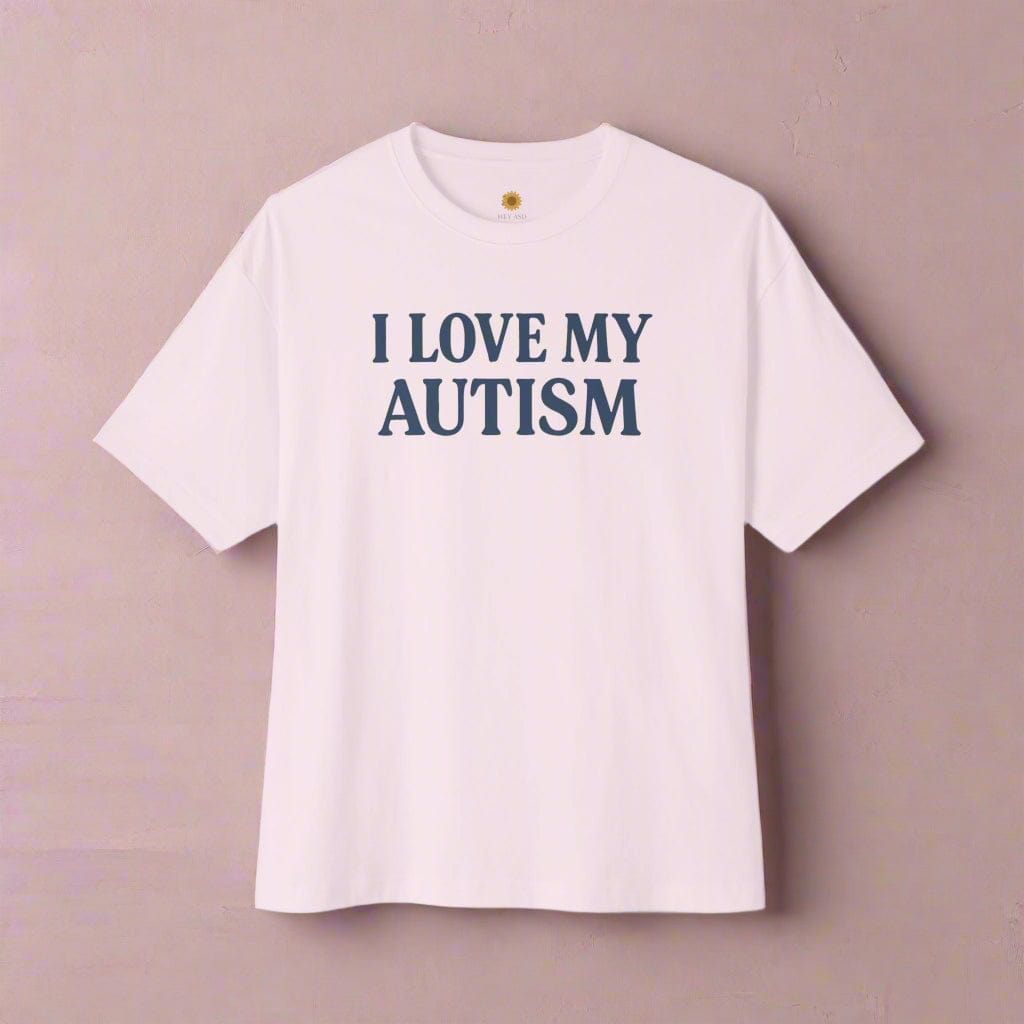Autism and Aging: How Autistic Adults Thrive and Grow with Time

Written by the HeyASD Editorial Team
Autistic adults often wonder how life might change with age—socially, emotionally, and physically. While formal research is still catching up, the stories and lived experiences of autistic people offer powerful insight. We are among the first large generations growing older with a diagnosis of autism, and our perspectives are shaping what aging looks like for the neurodiverse community.
As we age, our sensory needs, social rhythms, and emotional landscapes may shift—but our core identities remain. This guide explores how autism and aging intersect, offering both science and self-understanding to help you navigate this journey with comfort, dignity, and authenticity.
The Journey of Autism Across the Lifespan
Understanding that autism is a constant part of your identity is the first step toward embracing the aging process. Your core neurotype doesn't fade away; instead, it grows and changes with you. Over a lifespan, your experiences, wisdom, and self-knowledge reshape how your autistic traits manifest.
This journey is unique for every autistic person. For some, it means developing more effective coping strategies. For others, it involves the profound experience of a late autism diagnosis. Let's explore how autism evolves through adulthood.
Autism as a Lifelong Identity
Autism is not something you outgrow. It is a fundamental part of who you are, woven into your perceptions, thoughts, and way of being. Embracing this truth is a powerful act of self-acceptance. You don’t stop being autistic as you get older; you simply become an older autistic person.
“Getting older didn’t change my autism — it changed how I treat myself. I’m gentler now, and that makes all the difference.”
This perspective shifts the conversation from one of deficits to one of identity. Your autistic traits are part of the rich tapestry of your personality. Recognizing this helps you stand firm in your needs and celebrate your unique strengths, which is a cornerstone of the neurodiversity movement.
For many autistic adults, aging offers a chance to deepen this understanding. With the pressures of early adulthood sometimes lessening, you may find more space to connect with your authentic self, free from the expectation to change who you are. A diagnosis of autism at any age is simply a key to understanding your own instruction manual.
Evolution of Traits Through Adulthood
How might your autism present differently as you move through life? Your traits don't "worsen," but they can evolve. You might find that decades of experience have equipped you with better strategies for navigating social communication or managing sensory input.
During early adulthood, you may have spent significant energy masking to fit in. As you age, you might have less capacity or desire for this, leading to a more authentic, unmasked self. This isn’t a loss of skill; it’s a reclamation of energy and a move toward self-preservation.
“I used to spend every day trying to act normal — now, I’m just myself, and it’s so freeing. Aging gave me permission to stop pretending.”
Many older adults in our community report feeling more comfortable with who they are. The need to perform for others may diminish, replaced by a quiet confidence in your own way of being. You may find your social circle shrinks, but the connections become deeper and more meaningful. This is a natural and healthy evolution.
Late Diagnosis and Self-Discovery
A significant number of autistic adults receive their diagnosis later in life. If this is your story, you know the profound mix of relief, validation, and grief that can come with it. A late diagnosis is not an end point; it is the beginning of a new chapter of self-discovery.
This newfound understanding can reframe a lifetime of experiences. Suddenly, moments of feeling different, social challenges, or sensory overload have a name and a context. This can be incredibly healing for your mental health, allowing you to let go of self-blame and embrace your neurotype with compassion.
This journey of being late diagnosed as autistic leads to a period of rediscovery. You may explore new interests, set new boundaries, and connect with the autistic community for the first time. It is a powerful opportunity to rebuild your life in a way that truly honors your needs and celebrates your authentic self.
How Experiences Shape Autism Aging Process
Your life experiences play a huge role in how you navigate older age as an autistic person. Environmental factors, social support, and access to resources significantly impact your quality of life. A lifetime of supportive relationships and accommodating environments can build a strong foundation for healthy aging.
Conversely, living in stressful or unaccommodating environments can take a toll. Chronic stress from masking or navigating a world not built for you can lead to burnout and impact your physical and mental health over time. This is why creating a supportive personal environment becomes even more crucial as you get older.
Your journey is shaped by many factors, including:
-
Access to a diagnosis: Having the language to understand yourself.
-
Support systems: The presence of understanding family, friends, and community.
-
Financial stability: Resources to create a comfortable and supportive life.
-
Personal health practices: How you care for your body and mind over the years.
Autistic Voices on Growing Older
So, does autism get better or worse with age? This is a common question, but it’s framed in a way that doesn’t quite fit our experience. Autism doesn’t get "better" or "worse" because it isn't an illness. Instead, your relationship with your autism and your ability to thrive can change.
Many older autistic adults report a greater sense of peace and self-acceptance. They have had a lifetime to learn what works for them and are often more willing to set boundaries that protect their well-being. This isn't your autism "improving"—it's you growing into your identity with wisdom and confidence.
Here's what some older autistic individuals share:
-
A deeper appreciation for solitude and quiet routines.
-
Less pressure to conform to neurotypical social standards.
-
A stronger sense of purpose rooted in personal interests and values.
The Autism Aging Process: Research and Emerging Insights
The field of research on autism and aging is small but growing. For a long time, studies on autism spectrum disorder focused almost exclusively on children. Now, as the first generation of diagnosed autistic people reaches older age, scientists are beginning to conduct the longitudinal studies needed to understand our experiences.
This emerging science provides valuable data, but it’s important to view it through a neurodiversity-affirming lens. The findings are not a judgment on our worth or potential but rather tools to help us advocate for better health and a higher quality of life. Below, we'll look at what some of this research suggests.
What Science Says About Autism With Age
One significant longitudinal study, the Dunedin Study, followed nearly a thousand people to age 45. It found that adults with higher self-reported autistic traits tended to show signs of a faster biological "pace of aging." This was measured by tracking changes in 19 different biomarkers over many years.
This doesn't mean you are doomed to poor health. It suggests that the cumulative stress of navigating a neurotypical world, sometimes called "allostatic load," might impact our physical health over time. This finding is a call to action for us to prioritize self-care, stress reduction, and a supportive environment.
Here is a simple breakdown of the study's key associations for people with higher autistic traits:
|
Finding |
Association |
|---|---|
|
Pace of Aging |
A faster pace of biological aging. |
|
Facial Age |
Perceived as having an older facial age. |
|
Self-Rated Health |
More likely to report poorer health. |
|
Interviewer-Rated Health |
More likely to be rated as having poorer health by interviewers. |
Rethinking Age-Related Changes in Autism
It’s crucial to rethink what these age-related findings mean for older autistic adults. The research doesn't say that autistic brain development itself causes faster aging. Instead, it may point to the lifelong impact of environmental and social factors.
Living with autistic traits in a world not designed for you can be stressful. This chronic stress can affect everything from sleep to metabolic function. Therefore, the physical changes observed in some studies might be a consequence of the environment, not an inherent part of being autistic.
This perspective empowers us. By focusing on changing our environment, reducing stress, and advocating for our needs, we can actively support our own healthy aging process. It shifts the focus from a fixed biological destiny to one where we have agency over our well-being.
Neurodiversity and Healthy Aging
What does healthy aging look like from a neurodiversity perspective? It’s not about trying to age like the general population. It’s about defining health and quality of life on our own terms. For us, this often means prioritizing sensory comfort, emotional regulation, and authentic connection.
Healthy aging as an autistic person is about aligning your life with your neurotype. It’s about building routines that conserve your energy, engaging in passions that bring you joy, and connecting with a community that understands and accepts you completely. It is a move toward autism pride and self-respect.
Key components of healthy autistic aging include:
-
Creating a sensory-friendly home and lifestyle.
-
Honoring your need for rest and recovery to avoid burnout.
-
Cultivating a small circle of deep, meaningful relationships.
Calls for More Research on Aging and Autism
There is an urgent call to action for more research on aging and autism spectrum disorder. For too long, older autistic people have been invisible in scientific studies and healthcare planning. This lack of information leaves both autistic adults and health care providers without the knowledge to address our unique needs.
More research, especially with increased government funding, is needed to understand the long-term health conditions that may affect our community. We need studies that are designed with our input and that look beyond simple deficits to explore our strengths, resilience, and paths to a high quality of life.
Increased research will help:
-
Educate doctors about how to care for autistic elders.
-
Develop support services tailored to our needs.
-
Inform policies that promote healthy aging for the neurodiverse population.
Inclusion of Older Autistic Adults in Studies
For research to be meaningful, it must include us. "Nothing about us without us" is a vital principle. Older autistic adults must be partners in research, not just subjects. Our lived experiences are a rich source of data that can guide scientists toward the right questions.
In the United States and elsewhere, there is a push to ensure that studies on aging are inclusive of neurodivergent populations. This means actively recruiting older autistic participants and designing studies that are accessible and accommodating to our sensory and communication needs.
When we are included, research can better explore the factors that contribute to a high quality of life and good mental health. It can help identify the community supports and healthcare practices that make a real difference, leading to better outcomes for all of us as we age.
Sensory Needs and Shifting Perceptions Over Time
Your relationship with your senses has been a part of your life since early childhood. As you age, you may notice that your sensory sensitivities change. These shifts are a normal part of the aging process for everyone, but for older autistic adults, they can have a more significant impact on daily life.
Understanding these changes is the first step toward adapting and maintaining your sensory comfort. You might find some senses becoming more acute while others diminish, requiring new strategies to stay regulated and comfortable. Let’s explore what these sensory shifts can look like and how you can respond to them.
Sensory Sensitivities—Do They Intensify or Change?
Do sensory sensitivities get more intense with age? For some autistic adults, the answer is yes. You might find that you have less tolerance for noise, bright lights, or certain textures than you did when you were younger. This could be because your overall energy reserves are lower, leaving you with less capacity to buffer sensory input.
For others, the experience is more of a change than an intensification. A sound that was once tolerable might become distressing, while a sensitivity to certain foods might lessen. Your sensory profile is not static; it evolves with your body and your environment.
“I can handle less noise now, but I’m better at protecting my peace. I wear earplugs to family dinners, and no one questions it anymore.”
Common shifts in sensory sensitivities can include:
-
Increased sensitivity to loud or sudden noises.
-
Greater discomfort with crowded or visually busy environments.
-
A changing tolerance for food textures or clothing materials.
Adapting to New Sensory Experiences
Adapting to new sensory experiences is a key skill for aging well as an autistic person. The goal is to modify your environment and routines to match your current needs, rather than forcing yourself to tolerate discomfort. This is an act of self-care, not of giving in.
Start by paying close attention to your body. When do you feel most overwhelmed? What specific environmental factors, like the hum of a refrigerator or the glare from bright lights, are draining your energy? Keeping a simple sensory journal can help you identify patterns and triggers.
Once you know your triggers, you can make small, impactful changes. This could mean installing dimmer switches, using noise-canceling headphones, or choosing to shop at quieter times. Each adaptation you make is a way of building a more sustainable and peaceful life for yourself.
Common Sensory Challenges After 65
For autistic adults over 65, typical age-related health conditions can compound existing sensory issues. The natural process of aging can bring new challenges that require understanding and proactive management. It’s common to feel that your body is changing in ways you can't always predict.
You might notice that your physical flexibility decreases, making certain movements uncomfortable. Your balance might feel less steady, increasing anxiety in open spaces. These are common experiences in older age, but for autistic adults, they can add another layer of sensory information to process.
Some common challenges can include:
-
Diminishing hearing or vision, which can be disorienting.
-
Increased joint stiffness or aches and pains.
-
A feeling of being less physically resilient than before.
-
Difficulty explaining these internal states to others.
Vision, Hearing, and Environmental Fatigue
Changes in vision and hearing are a normal part of getting older, but for older autistic adults, they can be particularly disruptive. Your brain is used to processing the world in a specific way, and when that input changes, it can be disorienting and fatiguing.
You might find yourself straining to hear conversations, which can make social situations even more draining. Or, you may need brighter light to read but find that bright lights are visually overwhelming. This creates a conflict between different sensory needs that you have to navigate.
This constant need to adapt can lead to environmental fatigue, where just being in a typical environment feels exhausting. Recognizing this fatigue is important. It’s a signal that you need to create more accommodating spaces for yourself to rest and recharge from these new sensory demands.
Everyday Adjustments for Sensory Comfort
You can make many small, everyday adjustments to increase your sensory comfort. The key is to build a life that supports your nervous system instead of constantly challenging it. This is about creating a foundation of calm in your daily life.
Think about your daily routines. Can you build in more quiet time? Can you structure your day to avoid overwhelming environments during peak hours? Giving yourself permission to prioritize your comfort is a radical act of self-love.
Simple adjustments can make a huge difference:
-
Wear soft, comfortable clothing with no tags or irritating seams.
-
Use sunglasses or a wide-brimmed
autism hatto reduce visual input when you're outside. -
Plan your meals so you don't have to make complex decisions when you're already tired.
Building a Sensory-Friendly Life as You Age
As you move into older age, actively creating a sensory-friendly life becomes one of the most important things you can do for your well-being. This means intentionally designing your home, your routines, and your social life to align with your sensory needs. It’s about giving yourself a safe harbor from a world that is often too loud, too bright, and too chaotic.
This process is deeply personal. What works for one autistic adult may not work for another. The goal is to experiment and discover what brings you a sense of calm and regulation. Let’s look at some practical ways you can build this sensory-friendly life.
Choosing Textures and Clothing for Ease
The feel of fabric against your skin can have a huge impact on your day. As you age, your skin may become more sensitive, making your choice of clothing even more important. Prioritizing soft, breathable, and non-restrictive fabrics can eliminate a major source of sensory irritation.
Look for materials like cotton, bamboo, or soft blends. Pay attention to seams, tags, and waistbands. Many autistic adults find that seamless items or clothing with flat seams make a world of difference. You don't have to sacrifice style for comfort; many brands now offer sensory-friendly options.
Consider these tips when choosing your clothes:
-
Opt for soft
autism t-shirtsandautism hoodiesmade from natural fibers. -
Cut out all tags from your clothing.
-
Choose loose-fitting styles that don't constrict or bind.
Lighting and Noise Modifications at Home
Your home should be your sanctuary. Modifying the lighting and sound levels is one of the most effective ways to make it a truly sensory-friendly space. Harsh overhead lighting and fluorescent bulbs can be a significant source of sensory stress for many autistic individuals.
Consider replacing bright lights with warmer, lower-wattage bulbs. Use lamps to create pools of soft light instead of illuminating an entire room. Dimmer switches are a fantastic tool, allowing you to adjust the light level to match your mood and sensitivity at any given moment.
For noise, identify the sounds that bother you most. Is it the hum of an appliance or traffic from outside? You can use rugs and soft furnishings to dampen echo, invest in a white noise machine to mask jarring sounds, or simply use noise-canceling headphones when you need deep quiet.
Creating Predictable Social Rhythms
Socializing can be draining, and as you get older, you may have less energy for unpredictable social situations. Creating predictable social rhythms can help you stay connected without becoming overwhelmed. This means being intentional about how and when you engage with others.
Instead of large, chaotic gatherings, you might prefer one-on-one visits in a quiet setting. Scheduling regular, low-pressure activities with trusted friends, like a weekly walk or a phone call, can provide connection without the stress of spontaneity. It’s okay to have clear start and end times for social events.
Communicating your needs is key. Let your friends know that you enjoy their company but that you do best with planned, quiet interactions. True friends will understand and respect your need for a social life that works for you. This approach honors your social skills while protecting your energy.
The Role of Sensory-Friendly Products
In addition to modifying your environment, specific sensory-friendly products can provide comfort and regulation. These tools are designed to meet the unique sensory needs of autistic adults and can be a wonderful addition to your self-care toolkit. Finding the right products can make daily life much easier.
Weighted items, like sensory blankets or lap pads, can provide deep pressure that has a calming effect on the nervous system. Soft, textured items can be great for stimming, and noise-reducing earplugs can offer a reprieve from overwhelming sound. Items like autism jewelry can be both a statement of pride and a discreet stim tool.
Exploring an autism store like HeyASD can help you discover products that support your well-being:
-
Sensory Blankets: Can help improve sleep and reduce anxiety.
-
Comfortable Clothing: Our
autism hoodiesand tees are designed with soft textures for all-day ease. -
Calming Décor: Create a peaceful space with items that have soothing colors and textures.
Finding Calm in Your Personal Environment
Ultimately, the goal is to create a personal environment where your nervous system can be at rest. This is your foundation for managing everything else in life. When your home is a place of calm and safety, you have more resilience to face the outside world.
Take a look around your space. What objects bring you joy? What colors make you feel peaceful? Surround yourself with things that feel good to you, whether it's a collection of smooth stones, a soft blanket, or artwork that you love. Your environment should be a reflection of your inner world.
This practice of curating a calm space is especially helpful for managing co-occurring conditions like anxiety disorders. By reducing the sensory load in your environment, you lower your baseline stress level, making it easier to navigate emotional challenges and find moments of peace throughout your day.
Emotional Growth, Regulation, and Burnout
Your emotional landscape also evolves with age. A lifetime of masking, navigating social complexities, and managing sensory input can lead to autistic burnout, especially in middle or later life. Recognizing the signs of this profound exhaustion is vital for protecting your mental health and quality of life.
“Burnout for me felt like my brain just shut off. I wasn’t sad or angry — just completely empty. Rest stopped being optional; it became survival.”
However, aging can also bring immense emotional growth. Many autistic adults report finding a deeper sense of self-acceptance and peace as they get older. This journey involves learning to unmask, honoring your need for rest, and building a life that is emotionally sustainable. Let's explore these themes.
Recognizing and Navigating Burnout
Autistic burnout is a state of intense physical, mental, and emotional exhaustion. It’s often accompanied by a loss of skills and increased sensitivity. It's not just feeling tired; it's the result of chronic stress from trying to meet demands that exceed your capacity. As you age, your capacity might change, making you more susceptible to burnout.
Navigating burnout starts with recognizing its signs and giving yourself permission to rest. This means radical acceptance of your current limits. The solution to burnout is not to push harder, but to pull back and drastically reduce the demands on your system.
Signs of autistic burnout can include:
-
Increased exhaustion that isn't relieved by sleep.
-
Loss of executive function skills, like planning or decision-making.
-
Heightened sensory sensitivities and a lower tolerance for stress.
Emotional Fatigue: Signs and Solutions
Emotional fatigue is a core component of autistic burnout. It's the feeling of being completely drained from the effort of managing emotions—both your own and the expectations of others. This can be especially true if you've spent years masking or trying to interpret confusing social cues.
The solution to emotional fatigue is to conserve your emotional energy. This means being selective about where you invest it. It might involve spending less time in draining social situations and more time engaged in your special interests or with people who feel easy to be around.
Key strategies for managing emotional fatigue include:
-
Scheduled Rest: Build downtime into every day, not just when you feel exhausted.
-
Boundary Setting: Learn to say "no" to requests that will drain your energy.
-
Self-Compassion: Acknowledge that your emotional capacity is a finite resource and it's okay to protect it.
Unmasking for Self-Acceptance and Healing
For many autistic adults, aging offers the freedom to finally unmask. Masking—or hiding your natural autistic traits to fit in—is exhausting. Letting go of the mask is a powerful act of self-acceptance and a crucial step toward better mental health. It’s never too late to start living more authentically.
Unmasking can be a gradual process. It might start with allowing yourself to stim more freely at home, or being more direct in your communication with a trusted friend. Each small step is a victory for your true self. It's about letting your authentic personality shine through.
This journey can bring up a lot of emotions, but it ultimately leads to a profound sense of peace. When you no longer have to spend energy performing, you free up that energy to live, create, and connect in ways that are truly meaningful to you.
Gentle Structures and Building Resilience
Resilience for autistic adults often comes from structure. Gentle, predictable routines can provide a sense of safety and control in a chaotic world. They reduce the cognitive load of decision-making and free up mental energy for other things. As you age, these structures can become an anchor.
A gentle structure doesn't have to be rigid. It's about creating a predictable flow to your day that supports your well-being. This could be a morning routine that grounds you, a designated time for your special interests, or a calming ritual before bed.
Ways to build resilience through gentle structure:
-
Create a "To-Do" List: A simple checklist for the morning can reduce decision fatigue.
-
Anchor Your Day: Start and end your day with a predictable, calming activity.
-
Protect Your Interests: Schedule time for your passions as a non-negotiable part of your week.
Co-Regulation Techniques for Older Autistic Adults
Co-regulation is the process of calming your nervous system through interaction with a safe and trusted presence. While self-regulation is important, we are social beings who benefit from connection. For older autistic adults, finding sources of co-regulation can be a vital part of maintaining mental health.
This presence can be a person, a pet, or even nature. The key is that the interaction feels safe, predictable, and soothing. It's about borrowing the calm from another being when you can't find it within yourself.
Examples of co-regulation include:
-
Having a quiet conversation with a calm, understanding friend.
-
Stroking a pet and focusing on their steady breathing.
-
Spending time in a quiet natural setting, like a forest or by the water.
Social Connections, Relationships, and Aging
Your needs for social interaction and connection will likely change as you age. Many older adults, both autistic and neurotypical, find their social circles naturally become smaller. For autistic adults, this can be a welcome shift toward deeper, more meaningful relationships that require less exhausting social communication.
Maintaining social connections in later life is about quality, not quantity. It's about finding your people—those who accept you for who you are—and nurturing those relationships. This might look different from the neurotypical ideal of a bustling social life, and that is perfectly okay.
Changes In Social Energy Over Time
It is completely normal to find that your social energy decreases in older age. The capacity you once had for parties, large groups, or constant social engagement may no longer be there. Honoring this change is an important part of self-care.
This isn't a failure or a sign of decline. It is your body and mind telling you what you need. Pushing yourself to socialize beyond your capacity will only lead to exhaustion and burnout. Instead, you can learn to work with your energy levels, not against them.
Ways to manage your social energy:
-
Choose activities wisely: Opt for quiet, low-demand social settings.
-
Set time limits: Decide in advance how long you will stay at a social event.
-
Plan for recovery: Schedule quiet time for yourself after any social interaction.
Finding Community—Online and Offline
Finding a community of fellow autistic individuals can be a life-changing experience, especially in later life. For the first time, you may feel truly seen and understood. These connections can combat the social isolation that many of us have felt for years.
The rise of online communities has been a lifeline for many autistic adults. These spaces offer connection without the sensory and social demands of in-person gatherings. You can engage on your own terms, when you have the energy, and connect with peers from around the world.
Ways to find your community:
-
Join autistic-led Facebook groups or online forums.
-
Look for local, low-key meetups for autistic adults.
-
Follow autistic creators and advocates on social media.
-
Explore resources like
autism apporautism ai toolsthat connect you with peers.
Navigating Friendship Circles and Belonging
As you age, you may find that your definition of friendship and belonging changes. The superficial connections of youth may fall away, leaving space for relationships built on shared values, mutual respect, and authentic understanding.
It's okay if your friendship circle is small. For many autistic adults, having one or two close, trusted friends is far more fulfilling than having a large group of acquaintances. These are the relationships where you don't have to mask, where you can be your true self without fear of judgment.
Belonging isn't about fitting in everywhere. It's about finding the places and people where you feel at home. This might be in a book club focused on your special interest, an online gaming community, or simply in the quiet company of a dear friend.
Embracing Depth Over Quantity
Let go of the pressure to have a large social network. For autistic adults, the most rewarding relationships are often those that are deep and meaningful. Aging gives you the perspective to prioritize these connections over a high quantity of shallow ones.
Focus your limited social energy on the people who truly matter. These are the friends who understand your communication style, respect your need for downtime, and celebrate your passions. Investing in these relationships will bring you far more joy and support than trying to maintain a wide but superficial circle.
This is not a deficit in social skills; it is a preference for a different kind of connection. It's about valuing authenticity, shared understanding, and genuine care. Embracing this allows you to build a social life that nourishes you instead of drains you.
Supporting Late-Diagnosed Autistic Adults Socially
If you received a late diagnosis, you may be navigating the social world with a brand new understanding of yourself. It can be a time of both excitement and uncertainty as you learn to connect with others as your authentic self. Finding social support from other autistic people is key.
Connecting with other late-diagnosed autistic adults can be incredibly validating. They understand the unique journey of reframing a lifetime of experiences. They can offer advice, share resources, and provide the peer support that you may have been missing for decades.
How to find social support after a late diagnosis:
-
Seek out online groups specifically for late-diagnosed autistic adults.
-
Let trusted friends know about your diagnosis and how they can support you.
-
Be patient with yourself as you learn to navigate social situations in a new, more authentic way.
Health and Medical Advocacy for Autistic Elders
Navigating the healthcare system can be a major challenge for autistic adults, and these difficulties can be amplified in older age. Many health care providers have little to no training on how to support autistic patients, leading to communication barriers and sensory overload during medical visits.
Becoming a strong advocate for yourself is one of the most important skills for managing your health as you age. This means learning how to communicate your needs clearly and preparing for medical appointments to ensure you get the best possible care. Let's discuss some strategies for effective advocacy.
Communicating Needs with Healthcare Providers
Clear communication with health care providers is essential. Because of differences in communication styles, you may find that doctors misunderstand you, or you may struggle to describe your symptoms, especially when sharing sensitive information. It’s helpful to be direct and explicit about your needs.
Don't be afraid to state that you are autistic and explain what that means for your communication. You might say, "I'm autistic, so I appreciate it when you explain things very clearly and avoid idioms." This sets the stage for a more productive conversation.
Tips for clear communication:
-
Write down your questions and concerns before your appointment.
-
Ask for a summary of the visit in writing before you leave.
-
State your communication preferences at the beginning of the appointment.
Sensory Advocacy During Medical Visits
Medical environments are often sensory nightmares. The bright fluorescent lights, beeping machines, and unexpected touches can be incredibly overwhelming. Practicing sensory advocacy is crucial for making these medical visits more tolerable.
You have the right to request accommodations. Before or during your appointment, you can ask for simple changes that can make a big difference. This is not being difficult; it is ensuring you can remain calm enough to receive proper care.
For example, you can ask if it's possible to wait in a quieter area instead of the main waiting room. You can request that the lights be dimmed if possible, or explain that you need the practitioner to tell you before they touch you. These small acts of advocacy can significantly reduce the stress of a medical visit.
Preparing for Appointments With Written Notes
One of the most effective advocacy tools is preparation. Going into appointments with written notes can help you stay focused and ensure all your concerns are addressed, especially if you get anxious or overwhelmed during the visit.
Create a simple document before each appointment. List your symptoms, any questions you have, and a list of your current medications. You can hand a copy to the doctor, which allows them to understand your concerns even if you find it difficult to speak.
Your written notes can include:
-
A bulleted list of your main concerns, from most to least important.
-
The history of your symptoms (when they started, what makes them better or worse).
-
Any requests for sensory accommodations during the exam.
Support Persons and Sensory Preferences
You do not have to navigate medical appointments alone. Bringing a trusted support person—a friend, family member, or advocate—can be incredibly helpful. They can help you communicate, take notes, and advocate for your sensory preferences if you become overwhelmed.
Choose someone who understands your needs and can remain calm under pressure. Before the appointment, discuss your goals with them and what role you would like them to play. They can be your second set of ears and your voice when you need one.
Informing the clinic ahead of time about your sensory preferences can also be beneficial. You can create a one-page "medical passport" that lists your diagnosis, communication style, and key sensory needs. This simple tool can educate the medical team and pave the way for a smoother, more respectful experience.
Navigating Research on Neurodegenerative Topics
Emerging research is beginning to explore the intersection of autism and neurodegenerative topics. Some studies have found that autistic adults may have elevated rates of certain age-related conditions, such as Parkinson's disease, or show signs of faster biological aging. It's natural to find this information concerning.
It's important to approach this research with caution and without alarmism. These studies, some from institutions like the research hospital of NIH, show associations in groups, not individual certainties. As discussed earlier, these findings may be linked to the cumulative effects of chronic stress rather than being an inherent part of being autistic.
This research underscores the importance of proactive health management and self-advocacy. It is a call for better, more informed healthcare for autistic adults throughout our lives. It is not a prediction of your personal health future. You have agency in your health journey.
Thriving Into Later Life: Gifts and Wisdom of Aging Autistically
Embracing the aging journey reveals rich opportunities for self-discovery among autistic adults. As life unfolds, unique insights emerge, showcasing diverse perspectives that can enrich both personal experiences and community interactions. Creative expressions often flourish in later life, offering a powerful outlet for sharing thoughts and emotions. Navigating this stage involves recognizing the importance of autonomy and joy. Aging allows for deeper connections with oneself and others. Reflecting on one’s unique path fosters resilience, reminding us that wisdom grows alongside the challenges, illuminating the beauty of living authentically and comfortably in a world that is increasingly understanding.
Unique Insights and Creativity
Autistic adults often possess a remarkable ability to see the world through a unique lens, offering innovative perspectives that can inspire creativity in various domains. Over time, this insight can manifest into profound wisdom, shaping experiences and fostering resilience. Their creative expressions, whether through art, writing, or problem-solving, can reflect deep emotional truths and fresh viewpoints, enriching both their lives and those of others. This creative gift is often rooted in deep observation, allowing for original contributions that resonate within communities. Cultivating these insights not only enhances personal growth but also fosters connections among peers, creating a vibrant network of support.
Autonomy, Comfort, and Joy in Aging
Embracing autonomy becomes a vital element for many as they age. Autistic adults often find immense comfort in creating routines that suit their unique preferences, whether it's through familiar spaces, sensory-friendly environments, or supportive community connections. Joy arises from engaging in interests and hobbies, celebrating creativity, and nurturing friendships that flourish over shared experiences. This period of life allows for profound self-discovery, enabling clearer expressions of identity. By prioritizing personal interests and fostering meaningful connections, aging can transform into a fulfilling journey of authenticity and growth, enhancing quality of life in every facet.
“I used to chase fitting in. Now, I build a world that fits me. That’s what thriving looks like to me — a quiet, content kind of freedom.”
Growth After Diagnosis—A New Perspective
Acceptance following an autism diagnosis can be transformative, opening doors to self-discovery and empowerment. Autistic adults often experience a profound shift in understanding themselves, leading to valuable insights about their unique traits and strengths. Embracing this journey fosters resilience, encouraging the development of adaptive coping strategies. The experience of aging can amplify the appreciation of one’s identity, highlighting the richness of individual perspectives. With newfound autonomy, older autistic adults may find greater joy in exploring personal interests and nurturing meaningful connections, allowing them to thrive in their authenticity and contribute creatively to their communities.
Motivation for Hopeful Aging and Autism
Aging offers a unique opportunity to recognize and harness the strengths shaped throughout life. For many, this journey involves embracing themselves fully, cultivating a sense of empowerment and resilience. Autistic adults can find motivation in the vast tapestry of their experiences, using learned coping strategies to navigate new phases of life. Connection to community plays a vital role, providing support and shared understanding. Celebrating personal achievements and expressing authentic identity fosters joy. As one ages, it’s vital to reflect on past successes, igniting hope and enthusiasm for the future while remaining true to oneself.
Affirmations for Authentic Living
Embracing one’s unique journey enhances the experience of aging. Affirmations serve as powerful tools for fostering self-acceptance and celebrating the autistic identity. Phrases like “I thrive in my authenticity” and “My insights illuminate the world” can reinforce self-worth and promote positive feelings. By incorporating these affirmations into daily routines, autistic adults can cultivate resilience and embrace the richness of their perspective. Moreover, sharing these affirmations with peers fosters community and connection, establishing a supportive network where everyone feels valued. Such practices not only uplift individual spirits but also create a collective narrative of celebration and empowerment.
Key Takeaways: Autism and Aging
- Autism is lifelong — it doesn’t fade with time, but deepens into greater self-understanding and authenticity.
- Sensory needs may shift — comfort, rest, and predictable routines become essential for sustainable well-being.
- Late diagnosis can bring healing, self-compassion, and a chance to rebuild life on your own terms.
- Emotional burnout may appear later in life — protecting your energy and boundaries becomes an act of self-respect.
- Aging while autistic offers a path toward peace, self-trust, and joy in living authentically.
Final Thoughts
Aging as an autistic adult is not about decline—it’s about evolution. With every passing year, you carry more wisdom, self-awareness, and courage to live in alignment with who you truly are. You deserve a life that feels gentle, grounded, and attuned to your sensory and emotional needs.
Whether you’re exploring self-discovery after a late diagnosis or adjusting to new sensory experiences, remember that growth never stops. The world is slowly learning to meet you where you are—but in the meantime, you can build spaces of comfort and calm for yourself.
Embrace this next chapter with self-compassion and curiosity. The more you honour your needs, the more vibrant and peaceful aging can become.
Find Calm and Comfort in Every Season of Life
Our sensory blankets are designed for autistic adults seeking deeper rest and relaxation — offering gentle pressure, soft textures, and soothing warmth. They’re more than blankets — they’re tools for peace.
Explore Sensory BlanketsAutism & Aging Frequently Asked Questions
Does autism get better or worse as people age?
The experience of autism can vary significantly with age. Some individuals report improved coping strategies and emotional regulation, while others may face increased challenges. Ultimately, the journey is unique for each person, influenced by personal growth, support systems, and life experiences.
What are the most common challenges faced by autistic adults over age 65?
Common challenges faced by autistic adults over age 65 include social isolation, difficulty in accessing appropriate healthcare, and navigating changes in cognitive function. Furthermore, sensory sensitivities may intensify, impacting daily routines and overall quality of life as they age.
Are there recommendations for aging well with autism?
Yes, recommendations for aging well with autism include fostering strong social connections, engaging in meaningful activities, practicing self-care routines, and advocating for personal needs. Emphasizing autonomy and creating comfortable environments can also enhance quality of life while promoting joy and fulfillment in later years.
Where can older autistic adults find support services in the United States?
Older autistic adults can find support services through local autism advocacy organizations, community health centers, and specialized aging programs. National resources like the Autism Society and local chapters provide information on accessible services tailored to their unique needs and preferences.
How can autistic adults maintain social connections and relationships in later life?
Autistic adults can maintain social connections by seeking communities that foster understanding, engaging in shared interests, and utilizing technology for communication. Establishing routines and setting boundaries helps cultivate relationships, while emphasizing quality over quantity promotes deeper connections that enhance well-being in later life.
Are there specific resources available for autistic adults to help them navigate aging?
Yes, various resources support autistic adults in navigating aging, including community organizations, online forums, and specialized care services. These platforms offer information on health management, social connections, and advocacy to help individuals thrive in their later years.
How does the experience of aging differ for autistic individuals compared to neurotypical individuals?
Aging for autistic individuals often involves unique challenges and strengths, such as heightened sensitivity and different communication styles. Compared to neurotypical peers, they may find solace in routines and familiar environments, leading to distinct experiences that emphasize autonomy and personal growth throughout aging.



















